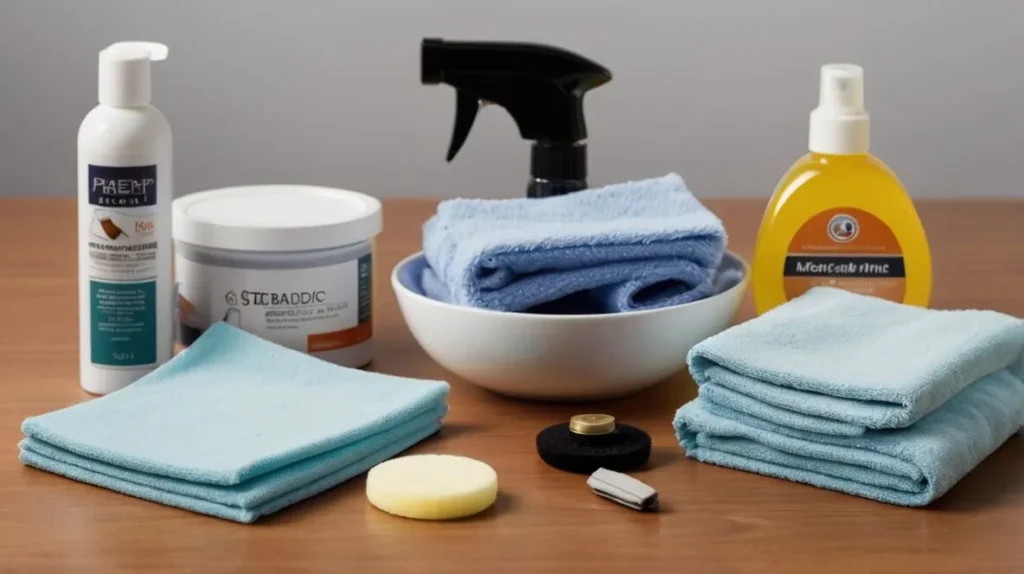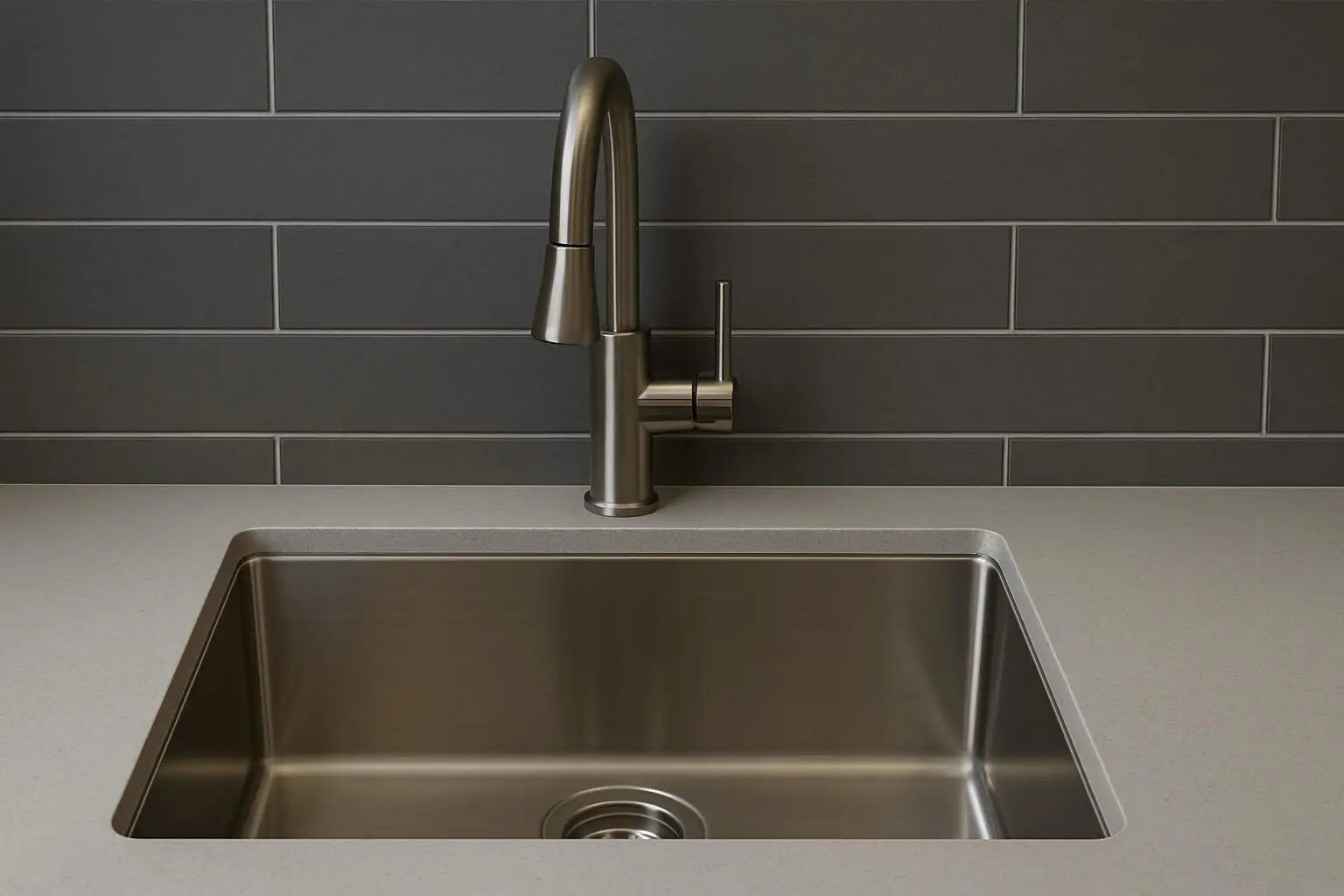When it comes to modern kitchen design, stainless steel appliances are the gold standard. They’re sleek, durable, and effortlessly stylish. But here’s the catch—keeping them clean? That’s another story. If you’ve found yourself constantly Googling how to clean stainless steel appliances, you’re not alone.
Stainless steel may be tough, but it’s a magnet for fingerprints, smudges, grease splatters, and streaks. One moment it looks pristine, the next it’s covered in spots from last night’s cooking marathon. Whether it’s your fridge, oven, dishwasher, or microwave, they all need a little extra love to stay shining bright.
In this guide, we’ll walk you through the easiest and most effective ways to clean, maintain, and protect your stainless steel appliances. You’ll learn about the best cleaning tools, natural DIY cleaners, commercial solutions, and how to prevent stains from coming back.
By the end, your appliances will look showroom-new—and you’ll know exactly how to keep them that way.


Why Regular Cleaning of Stainless Steel Appliances Matters
You might be tempted to think, “It’s just a few fingerprints—I’ll clean it later.” But regular cleaning of your stainless steel appliances does much more than improve aesthetics.


1. Prevents Corrosion
Yes, stainless steel is resistant to rust, but it’s not rust-proof. Moisture, salt, and acidic residues can corrode the surface over time. Regular cleaning prevents this buildup and keeps the protective chromium oxide layer intact.
2. Maintains the Finish
The more you neglect stainless steel, the more difficult it becomes to restore its original shine. Light smudges can turn into dull, cloudy spots if left untreated.
3. Enhances Kitchen Hygiene
Kitchens are full of bacteria, especially around appliance handles. Cleaning those areas regularly helps prevent the spread of germs.
4. Extends Appliance Life
Grease, grime, and mineral deposits can affect the functionality of your appliances. Keeping them clean ensures smoother operation and fewer repair issues.
5. Improves Energy Efficiency
A clean appliance performs better—especially true for ovens and dishwashers. Clean components mean better airflow and heat distribution.
So next time you put off wiping down your fridge door, remember—it’s not just about looks; it’s about longevity, safety, and performance.
How to Clean Stainless Steel Appliances: Step-by-Step
Cleaning stainless steel doesn’t have to be complicated. In fact, with the right tools and methods, it becomes a quick and satisfying chore.


What You’ll Need:
- Microfiber cloth (never paper towels—they can scratch!)
- Spray bottle filled with white vinegar or a commercial stainless steel cleaner
- Baking soda (for tough spots)
- Dish soap and warm water
- Olive oil or mineral oil (optional for polishing)
Step 1: Wipe Down with Vinegar or Soap Water
Spray white vinegar directly onto the appliance or onto a microfiber cloth. Wipe in the direction of the grain—you’ll see faint lines going either horizontally or vertically. This ensures an even, streak-free clean.
If your appliance is greasy, mix a drop of dish soap in warm water and use that instead. Rinse with a damp cloth afterward.
Step 2: Buff with a Dry Microfiber Cloth
After cleaning, use a dry cloth to buff the surface. This removes moisture and brings out the shine.
Step 3: Polish with Oil (Optional)
For that showroom finish, apply a tiny bit of olive oil or mineral oil to a clean cloth and buff in the direction of the grain. This helps repel future fingerprints and adds a subtle shine.
Note: Always test a small hidden area before using any cleaner, especially commercial products.
Homemade Cleaners for Stainless Steel Appliances
Want to skip the chemicals and clean your appliances naturally? Here are some excellent homemade solutions that are safe, affordable, and effective.


1. White Vinegar Spray
- Mix 1:1 white vinegar and water in a spray bottle.
- Spray on the appliance and wipe with a microfiber cloth.
Vinegar dissolves grease and removes hard water spots effortlessly. Plus, it’s antibacterial!
2. Baking Soda Paste
- Mix 3 parts baking soda with 1 part water to make a paste.
- Apply to stubborn spots or stains.
- Rub gently with a soft cloth and rinse thoroughly.
This method works wonders for water marks and hardened food grime.
3. Lemon Juice and Olive Oil
- Wipe with lemon juice to cut grease and add freshness.
- Follow with a light polish of olive oil for shine.
Great for quick refreshes between deeper cleans.
Tip: Avoid using abrasive cleaners, steel wool, or chlorine-based products. These can scratch and discolor your stainless steel.
Commercial Stainless Steel Cleaners: What Works Best
If you prefer ready-made solutions, there are plenty of commercial stainless steel cleaners available. Here are some popular and effective options:
1. Weiman Stainless Steel Cleaner & Polish
A go-to favorite for many households, it removes streaks and fingerprints with ease and leaves a protective layer behind.
2. Therapy Stainless Steel Cleaner
Plant-based and non-toxic, this cleaner uses coconut oil to both clean and shine. Ideal for homes with kids or pets.
3. Bar Keepers Friend
More abrasive than others, this powder cleaner is great for restoring old or heavily scratched surfaces. Use sparingly and only for deep cleaning sessions.
How to Use Commercial Cleaners:
- Apply the cleaner to a microfiber cloth, not directly to the appliance.
- Wipe in the direction of the grain.
- Buff dry with a separate cloth for a streak-free finish.
External Resource: For more on stainless steel care, the Mayo Clinic’s household cleaning tips can guide you on what chemicals are safe for the home.
Tough Stains and Grease Removal on Stainless Steel Appliances
Sometimes vinegar and water just won’t cut it. When you’re dealing with stubborn grime, caked-on food, or greasy buildup—especially on stove hoods or oven doors—you’ll need a stronger approach.


Step-by-Step Method for Tough Grease:
- Use Dish Soap + Warm Water:
Start with a degreasing dish soap (like Dawn) mixed with warm water. Apply it using a soft sponge or microfiber cloth. - Target Stubborn Areas with Baking Soda Paste:
Apply baking soda paste directly to the greasy spots. Let it sit for 10–15 minutes to break down oils. Then, scrub gently along the grain using a damp cloth. - Rinse and Dry:
Wipe the area clean with a damp cloth, then buff dry with a microfiber towel. - Optional: Use a Degreasing Cleaner
For extreme cases, use a commercial degreasing spray that’s safe for stainless steel (always check the label). Avoid oven cleaners unless they are clearly labeled for stainless steel.
Tip for Grease-Prone Areas:
Use a barrier method by applying a light coat of mineral oil after cleaning. This creates a protective layer that makes it easier to wipe off grease the next time.
Pro Tip: Regular cleaning makes future deep cleans way easier. Don’t wait until grime becomes visible!
How to Prevent Fingerprints and Stains on Stainless Steel
Stainless steel’s sleek look is often overshadowed by its ability to attract every fingerprint, drip, or smudge. Prevention is the name of the game here.


1. Apply a Protective Coating
After a deep clean, rub a tiny amount of baby oil, olive oil, or commercial stainless steel polish onto the surface. Buff it in using a microfiber cloth to repel smudges.
2. Handle with Clean, Dry Hands
Encourage household members to avoid touching stainless appliances with wet or greasy hands. Wipe appliance handles daily if possible.
3. Use Appliance Handle Covers
These washable covers wrap around fridge or oven handles to absorb oils and dirt from hands. They’re a smart, low-cost investment for busy kitchens.
4. Clean Along the Grain
Stainless steel is brushed with fine lines. Wiping along this grain not only gives a smoother clean but prevents deep-set grime and fingerprint marks.
5. Avoid Harsh Cleaners
Chlorine-based cleaners or ammonia can leave a hazy film or discoloration over time. Stick with gentle, stainless-safe products.
How Often Should You Clean Stainless Steel Appliances?
The frequency of cleaning depends on usage and how “lived in” your kitchen is, but here’s a good rule of thumb:
Daily:
- Wipe down high-touch areas like handles with a microfiber cloth and water.
- Use vinegar spray for quick smudge removal.
Weekly:
- Deep clean appliance doors and surfaces using vinegar or soap solution.
- Buff and polish with oil to maintain shine.
Monthly:
- Inspect appliance exteriors for buildup.
- Use baking soda paste for any stubborn marks or grime.
- Reapply oil or polish to create a new protective layer.
Signs You’re Overdue for Cleaning:
- Dull, streaky finish
- Sticky spots near handles
- Smudges that are hard to remove
- Slight discoloration or cloudy patches
Keeping a routine helps reduce effort over time—and it keeps your kitchen looking polished all week long.
Maintenance Tips to Keep Stainless Steel Shining
Once your appliances are sparkling clean, you’ll want to keep them that way with regular maintenance. Here’s how:


1. Use the Right Tools
Stick to microfiber cloths—they lift oil and dust without scratching. Avoid rough pads or brushes.
2. Store a DIY Spray Bottle Nearby
Keep a small spray bottle of 1:1 vinegar and water mix under your sink for quick wipe-downs after cooking.
3. Rotate Your Polishing Schedule
You don’t need to polish everything weekly. Rotate between your fridge, dishwasher, oven, and microwave—polishing one item each week keeps your full kitchen in shape with minimal effort.
4. Keep Handles Extra Clean
These are high-traffic areas. Wipe handles every day or two, especially on refrigerators and dishwashers.
5. Address Spills Immediately
Acidic spills (like lemon juice or tomato sauce) can dull stainless steel if not cleaned right away. Blot and wipe immediately for best results.
Quick Checklist for Shine Maintenance:
- ✔ Daily: Buff high-use surfaces
- ✔ Weekly: Deep clean and reapply protective oils
- ✔ Monthly: Scrub out grime with baking soda
With just a few consistent habits, your stainless steel appliances will look brand new every day.
Common Mistakes to Avoid When Cleaning Stainless Steel Appliances
Even the best intentions can go wrong if you’re not careful. Here are the most common mistakes that can harm your appliances—and how to avoid them.
1. Scrubbing Against the Grain
This can create micro-scratches that trap dirt and grease. Always clean with the grain.
2. Using Abrasive Tools
Steel wool, scouring pads, and harsh brushes will scratch and dull your finish. Stick with soft cloths.
3. Using Paper Towels
They seem soft but can actually cause fine scratches and leave lint behind. Always use microfiber cloths.
4. Skipping the Rinse
If you leave cleaner or vinegar residue behind, it can cause streaking or dull spots. Always finish with a rinse and a dry buff.
5. Using the Wrong Cleaner
Avoid bleach, ammonia, and oven cleaner. These can corrode the stainless steel surface and cause permanent discoloration.
6. Not Doing Spot-Testing
Before using any new cleaner, test a small hidden area first to ensure there’s no reaction.
Avoiding these mistakes will preserve your appliance finish and reduce the need for deep repairs or refinishing later.
Conclusion
Now that you know how to clean stainless steel appliances, you’re equipped to keep your kitchen looking fresh, modern, and streak-free with minimal effort. These beautiful surfaces might be prone to fingerprints, smudges, and watermarks—but with the right tools and consistent habits, maintaining that showroom shine is absolutely doable.
Whether you prefer natural DIY cleaners or commercial products, the steps are simple: clean regularly, wipe along the grain, and protect your surfaces with a gentle polish. Don’t wait until your fridge door is a fingerprint magnet or your oven handle is caked with grease. A quick wipe daily and a deep clean weekly can make all the difference.
Clean appliances aren’t just about aesthetics—they boost hygiene, prevent long-term damage, and enhance the performance and lifespan of your favorite kitchen machines.
Make stainless steel care part of your routine, and your kitchen will thank you with lasting shine and timeless style.






